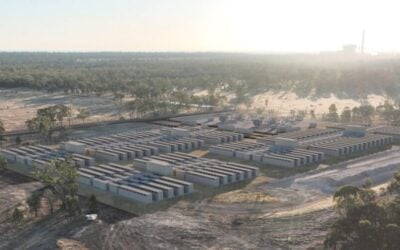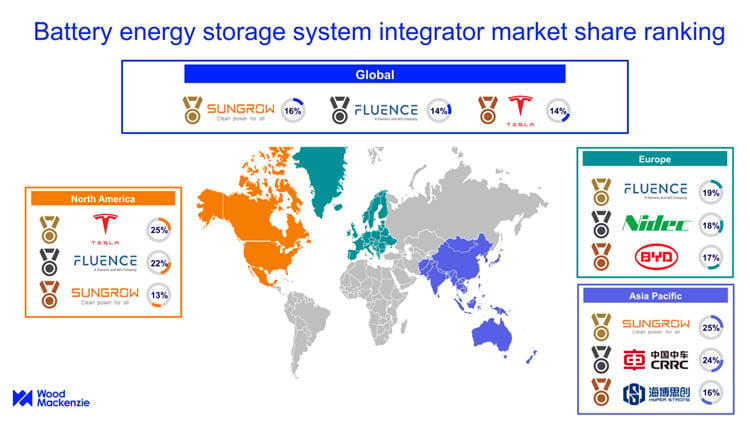Report on New York State’s Energy Transition and Sustainable Development Goals
Introduction: The Challenge of Balancing Energy Policy with SDGs
- New York State is navigating a complex energy transition, aiming to align with climate objectives while addressing significant challenges related to energy affordability, grid reliability, and economic impacts.
- This transition directly intersects with several United Nations Sustainable Development Goals (SDGs), particularly SDG 7 (Affordable and Clean Energy), SDG 8 (Decent Work and Economic Growth), and SDG 9 (Industry, Innovation, and Infrastructure).
- The state’s policy, driven by the Climate Leadership and Community Protection Act (CLCPA), mandates a rapid shift towards electrification, primarily through wind and solar power. This approach has generated debate over its feasibility and its alignment with the core principles of sustainable development.
Analysis of Current Energy Strategy and Legislative Actions
The Push for Electrification and its Implications for SDG 7
- Current legislative efforts are focused on phasing out natural gas in favor of complete electrification.
- This strategy raises concerns regarding its impact on SDG 7 (Affordable and Clean Energy), as it may lead to:
- Increased financial burden on consumers, potentially undermining the goal of affordable energy for all.
- Heightened pressure on the existing energy grid, posing risks to reliability and access.
- A potential increase in the frequency of power outages.
- A reduction in consumer energy choices, limiting household-level energy management.
The Role of a Diverse Energy Portfolio
- A gubernatorial announcement on June 23, 2025, regarding plans for a new nuclear facility acknowledged that intermittent renewables like solar and wind may be insufficient to meet the state’s total energy demand.
- This highlights the critical need for a diverse, technologically inclusive energy portfolio to ensure a stable and reliable transition, a core component of achieving SDG 7.
- Legislative debate continues over the inclusion of other carbon-free sources, such as nuclear and hydro-electric power, with opposition often citing environmental concerns related to SDG 15 (Life on Land).
Legislative Transparency and Economic Impact
Calls for Accountability in Line with SDG 16
- Legislative proposals have been introduced to enhance transparency regarding the costs and feasibility of the state’s energy transition, aligning with the principles of SDG 16 (Peace, Justice and Strong Institutions). These include:
- Bill A.5395: A proposal to mandate a full cost-benefit analysis of the state’s renewable energy implementation plan.
- The Ratepayer Disclosure and Transparency Act (A.6152-A): A bill designed to require detailed breakdowns on consumer utility bills of all costs associated with the CLCPA.
- The blocking of these transparency-focused bills in the Assembly Energy Committee raises questions about the accountability of the policy-making process.
Economic and Social Consequences Related to SDG 8 and SDG 11
- The passage of legislation such as the reworked HEAT Act (A.8889) and the repeal of the “100-foot rule” for natural gas connections (A.8888) is expected to have significant economic repercussions.
- These measures may negatively impact progress towards SDG 8 (Decent Work and Economic Growth) and SDG 11 (Sustainable Cities and Communities) by:
- Forcing costly home retrofits for millions of residents to accommodate all-electric appliances.
- Increasing utility rates and the cost of new home construction.
- Resulting in the loss of jobs for skilled trade workers in the natural gas sector.
Geographic and Infrastructure Considerations for Sustainable Development
The Urban-Rural Divide and Land Use (SDG 11 & SDG 15)
- A significant portion of New York’s existing clean energy, including hydro and nuclear, is generated in upstate regions.
- Following the 2021 closure of the Indian Point Nuclear plant, New York City has become more reliant on natural gas for its electricity generation.
- The current strategy proposes siting large-scale wind and solar projects in rural upstate areas to power downstate consumption centers. This approach creates tension between urban energy needs and rural land use, impacting SDG 11 (Sustainable Cities and Communities) and SDG 15 (Life on Land).
- An alternative approach would be to prioritize solar installations on rooftops, parking lots, and other available spaces within the high-demand urban areas first.
Infrastructure and Grid Modernization (SDG 9)
- A critical challenge is the development of robust transmission infrastructure to move power from upstate generation sites to downstate load centers.
- Achieving this will require significant investment and planning to modernize the grid, a key target of SDG 9 (Industry, Innovation, and Infrastructure).
- The potential use of eminent domain to secure routes for new transmission lines presents a further challenge to equitable development and community consent.
Recommendations for a Balanced Path Forward
Fostering Partnerships in Accordance with SDG 17
- Achieving New York’s energy goals requires a balanced and pragmatic approach that integrates environmental protection with economic stability and energy reliability.
- A collaborative, bipartisan effort is essential to develop realistic and sustainable policies. This reflects the core principles of SDG 17 (Partnerships for the Goals).
- Future policy should prioritize a diverse mix of clean energy technologies, enhance institutional transparency, and ensure that the energy transition is affordable and equitable for all New Yorkers, thereby holistically advancing the Sustainable Development Goals.
SDGs Addressed in the Article
- SDG 7: Affordable and Clean Energy
- SDG 8: Decent Work and Economic Growth
- SDG 9: Industry, Innovation, and Infrastructure
- SDG 11: Sustainable Cities and Communities
- SDG 13: Climate Action
- SDG 16: Peace, Justice, and Strong Institutions
Identified SDG Targets
-
SDG 7: Affordable and Clean Energy
- Target 7.1: Ensure universal access to affordable, reliable and modern energy services.
The article’s central theme is the “high cost of energy” for New Yorkers. It expresses concern that the push for full electrification will “increase costs on the consumer” and put “extra pressure on the grid, increase the chances of dangerous blackouts,” directly addressing the affordability and reliability of energy services. - Target 7.2: Increase substantially the share of renewable energy in the global energy mix.
The article discusses New York’s plan to end “natural gas use for energy in favor of wind and solar for complete electrification.” It also mentions other clean energy sources like “nuclear power” and “carbon-free hydro-electric power generation,” highlighting the debate around increasing the share of various clean and renewable energy sources.
- Target 7.1: Ensure universal access to affordable, reliable and modern energy services.
-
SDG 8: Decent Work and Economic Growth
- Target 8.5: Achieve full and productive employment and decent work for all women and men…
The article explicitly states that repealing the “100-foot rule” for natural gas hookups “will also result in the loss of thousands of jobs for trade workers,” connecting the energy policy decisions directly to employment.
- Target 8.5: Achieve full and productive employment and decent work for all women and men…
-
SDG 9: Industry, Innovation, and Infrastructure
- Target 9.1: Develop quality, reliable, sustainable and resilient infrastructure…
The article discusses the state’s energy infrastructure, including the grid’s ability to handle full electrification, the need to build a “new nuclear facility,” and the future construction of “transmission line routes that will move the upstate energy to downstate.” These points all relate to developing and maintaining reliable and sustainable infrastructure. - Target 9.4: Upgrade infrastructure and retrofit industries to make them sustainable…
The legislation discussed will “force millions of New Yorkers to retrofit their homes for all electric appliances for heating and cooking,” which is a direct example of retrofitting infrastructure (housing) to align with new energy sustainability goals.
- Target 9.1: Develop quality, reliable, sustainable and resilient infrastructure…
-
SDG 11: Sustainable Cities and Communities
- Target 11.1: Ensure access for all to adequate, safe and affordable housing and basic services…
Energy is a basic service. The article highlights how repealing the “100-foot rule” will “increase costs on home buyers” and that energy policies will force costly retrofits on homeowners, impacting the affordability of housing and basic services.
- Target 11.1: Ensure access for all to adequate, safe and affordable housing and basic services…
-
SDG 13: Climate Action
- Target 13.2: Integrate climate change measures into national policies, strategies and planning.
The article is a critique of the “Climate Leadership and Community Protection Act (CLCPA), which mandates the state reach unrealistic and costly electrification mandates.” This act is a clear example of a state-level policy integrating climate change measures into its planning.
- Target 13.2: Integrate climate change measures into national policies, strategies and planning.
-
SDG 16: Peace, Justice, and Strong Institutions
- Target 16.6: Develop effective, accountable and transparent institutions at all levels.
The article calls for more transparency from institutions. It mentions a proposed bill (A.5395) that “would require the Public Service Commission to conduct a full cost-benefit analysis” and the “Ratepayer Disclosure and Transparency Act (A.6152-A)” to provide a “detailed breakdown on consumer electric bills of costs associated with the CLCPA.” This directly addresses the need for institutional accountability and transparency.
- Target 16.6: Develop effective, accountable and transparent institutions at all levels.
Mentioned or Implied Indicators
-
SDG 7: Affordable and Clean Energy
- Indicator (Implied): Cost of energy for consumers.
The article repeatedly mentions the “high cost of energy” and how new policies will “increase costs on the consumer” and “increase utility rates.” This cost is a primary indicator of affordability. - Indicator 7.2.1: Renewable energy share in the total final energy consumption.
The article discusses the state’s energy mix, noting that “Over 90 percent of upstate energy is clean and green” due to hydro and nuclear power, and critiques the plan to replace natural gas with “wind and solar.” The percentage share of these sources is a direct indicator.
- Indicator (Implied): Cost of energy for consumers.
-
SDG 8: Decent Work and Economic Growth
- Indicator (Implied): Number of jobs in specific trades.
The prediction of “the loss of thousands of jobs for trade workers” implies that the number of people employed in these specific roles is a key metric for measuring the economic impact of the policy.
- Indicator (Implied): Number of jobs in specific trades.
-
SDG 9: Industry, Innovation, and Infrastructure
- Indicator (Implied): Grid reliability/stability.
The concern about “dangerous blackouts” implies that the frequency and duration of power outages would be a key indicator of the grid’s reliability and resilience.
- Indicator (Implied): Grid reliability/stability.
-
SDG 16: Peace, Justice, and Strong Institutions
- Indicator (Implied): Public access to information on energy costs.
The proposed “Ratepayer Disclosure and Transparency Act (A.6152-A)” aims to “require a monthly report to ratepayers about how their money is being spent on utilities” and a “detailed breakdown on consumer electric bills.” The existence and content of such reports would be a direct indicator of transparency.
- Indicator (Implied): Public access to information on energy costs.
Summary of SDGs, Targets, and Indicators
| SDGs | Targets | Indicators |
|---|---|---|
| SDG 7: Affordable and Clean Energy |
7.1: Ensure universal access to affordable, reliable and modern energy services.
7.2: Increase substantially the share of renewable energy in the global energy mix. |
– Cost of energy for consumers (utility rates). – Frequency and duration of blackouts. – Percentage share of renewable and clean energy (wind, solar, hydro, nuclear) in the state’s energy mix. |
| SDG 8: Decent Work and Economic Growth | 8.5: Achieve full and productive employment and decent work for all. | – Number of jobs lost or created for trade workers in the energy sector. |
| SDG 9: Industry, Innovation, and Infrastructure |
9.1: Develop quality, reliable, sustainable and resilient infrastructure.
9.4: Upgrade infrastructure and retrofit industries to make them sustainable. |
– Investment in new energy facilities (nuclear, transmission lines). – Number of homes retrofitted for all-electric appliances. |
| SDG 11: Sustainable Cities and Communities | 11.1: Ensure access for all to adequate, safe and affordable housing and basic services. | – Cost of new home hookups for utilities. – Cost of mandatory home retrofits. |
| SDG 13: Climate Action | 13.2: Integrate climate change measures into national policies, strategies and planning. | – Existence and implementation of state-level climate policies like the CLCPA. |
| SDG 16: Peace, Justice, and Strong Institutions | 16.6: Develop effective, accountable and transparent institutions at all levels. | – Public availability of cost-benefit analyses of energy policies. – Provision of detailed cost breakdowns on consumer utility bills. |
Source: evesun.com







